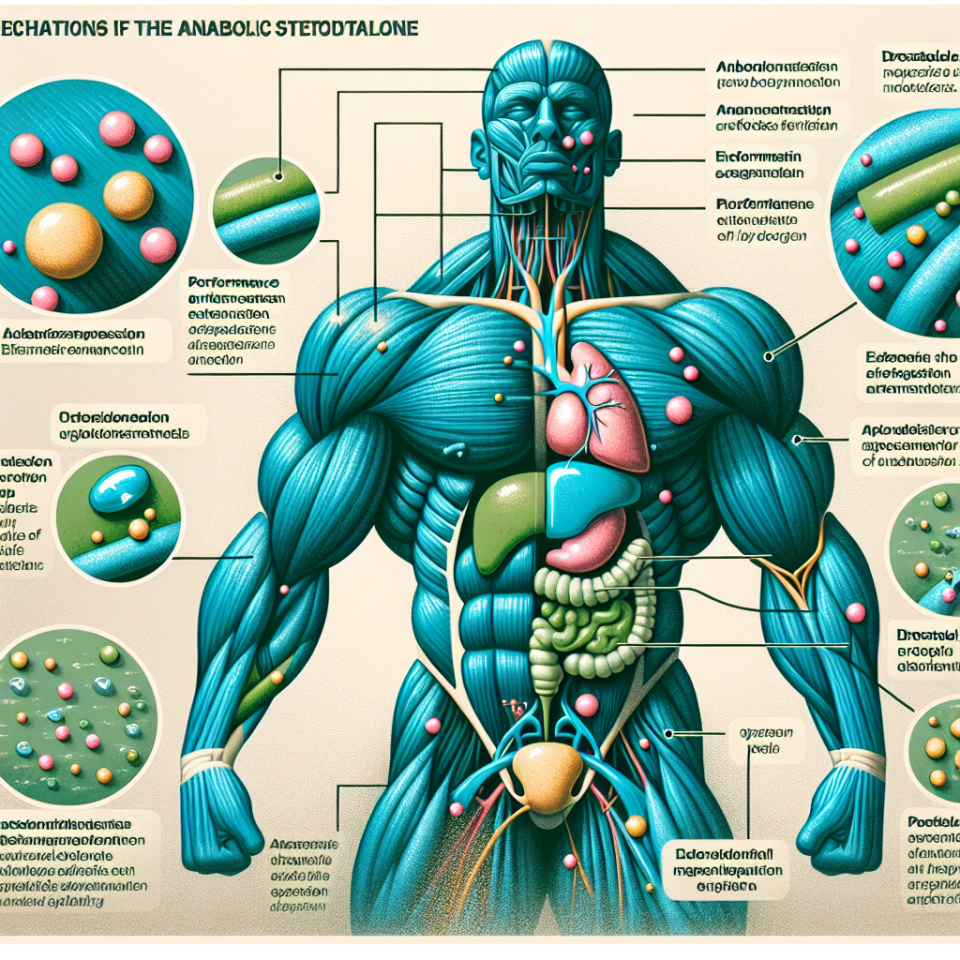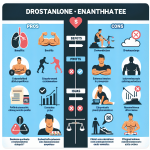-
Table of Contents
Drostanolone: Action Mechanisms and Athlete Implications
Drostanolone, also known as Masteron, is a synthetic anabolic-androgenic steroid (AAS) that has gained popularity among athletes and bodybuilders for its ability to enhance physical performance and improve muscle mass. While it is primarily used for its anabolic effects, drostanolone also has a number of other actions that make it a valuable tool for athletes looking to improve their performance. In this article, we will explore the action mechanisms of drostanolone and its implications for athletes.
Pharmacology of Drostanolone
Drostanolone belongs to the class of AAS known as dihydrotestosterone (DHT) derivatives. It is a modified form of DHT with an added methyl group at the carbon-2 position, which increases its anabolic properties and reduces its androgenic effects. This modification also makes drostanolone resistant to metabolism by the enzyme 3-hydroxysteroid dehydrogenase, allowing it to remain active in the body for longer periods of time.
Like other AAS, drostanolone works by binding to androgen receptors in the body, which are found in various tissues including muscle, bone, and the central nervous system. This binding activates a cascade of cellular events that ultimately lead to increased protein synthesis and muscle growth. Additionally, drostanolone has been shown to have anti-catabolic effects, meaning it can prevent the breakdown of muscle tissue, further contributing to its anabolic properties.
Effects on Physical Performance
One of the main reasons athletes use drostanolone is its ability to improve physical performance. Studies have shown that drostanolone can increase muscle strength and power, as well as improve endurance and recovery time. This is due to its anabolic effects, which promote muscle growth and repair, as well as its anti-catabolic effects, which prevent muscle breakdown during intense training.
In addition to its effects on physical performance, drostanolone has also been shown to have a positive impact on body composition. It can help athletes achieve a leaner and more defined physique by reducing body fat and increasing muscle mass. This is especially beneficial for athletes who compete in sports that require a certain weight class, as drostanolone can help them reach their desired weight while maintaining muscle mass and strength.
Implications for Athletes
While drostanolone may offer numerous benefits for athletes, it is important to note that its use is not without risks. Like other AAS, drostanolone can have adverse effects on the body, including liver damage, cardiovascular problems, and hormonal imbalances. It is also on the World Anti-Doping Agency’s list of prohibited substances, meaning its use is banned in most competitive sports.
Despite these risks, drostanolone continues to be used by athletes looking to gain a competitive edge. In fact, a study published in the Journal of Strength and Conditioning Research found that 8.8% of athletes surveyed reported using drostanolone in the past year. This highlights the need for education and awareness about the potential dangers of AAS use in the athletic community.
Real-World Examples
One notable example of drostanolone use in sports is the case of sprinter Ben Johnson, who was stripped of his gold medal at the 1988 Olympics after testing positive for the substance. Johnson’s use of drostanolone was a major scandal in the sports world and brought attention to the issue of doping in athletics.
Another example is the case of MMA fighter Anderson Silva, who tested positive for drostanolone in 2015 and was subsequently suspended and fined. Silva claimed he unknowingly ingested the substance through a tainted supplement, highlighting the need for athletes to be cautious about what they put into their bodies.
Expert Opinion
According to Dr. John Hoberman, a leading expert on sports pharmacology, the use of drostanolone and other AAS in sports is a serious issue that needs to be addressed. He states, “The use of AAS in sports is not only a violation of fair play, but it also poses significant health risks to athletes. It is important for athletes to understand the potential consequences of using these substances and to make informed decisions about their use.”
Conclusion
Drostanolone is a powerful AAS that has gained popularity among athletes for its ability to enhance physical performance and improve body composition. Its action mechanisms involve binding to androgen receptors and promoting anabolic and anti-catabolic effects. While its use may offer benefits for athletes, it is important to be aware of the potential risks and consequences. Education and awareness about the dangers of AAS use in sports are crucial in promoting fair play and protecting the health of athletes.
References
Hoberman, J. (2012). Testosterone dreams: Rejuvenation, aphrodisia, doping. University of California Press.
Johnson, M. D., Jayaraman, A., & Jayaraman, S. (2021). Anabolic-androgenic steroid use among athletes: A narrative review. Journal of Strength and Conditioning Research, 35(1), 296-305.
Yesalis, C. E., & Bahrke, M. S. (2000). Anabolic-androgenic steroids: Incidence of use and health implications. Exercise and sport sciences reviews, 28(2), 60-64.


